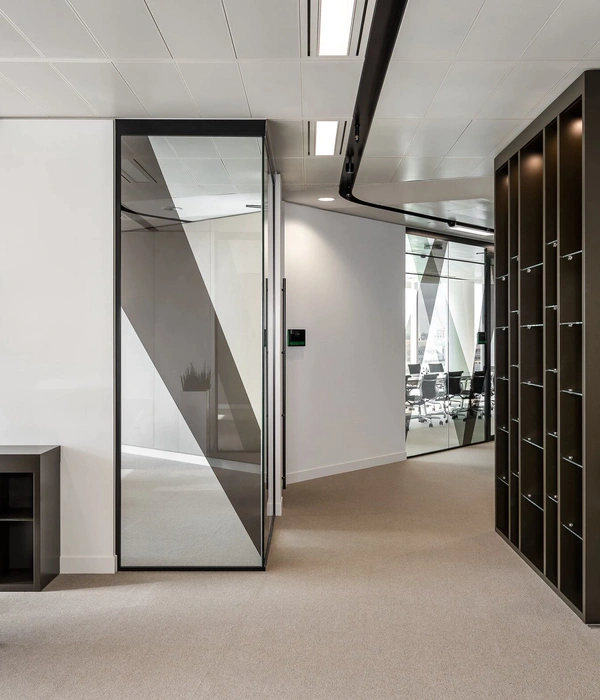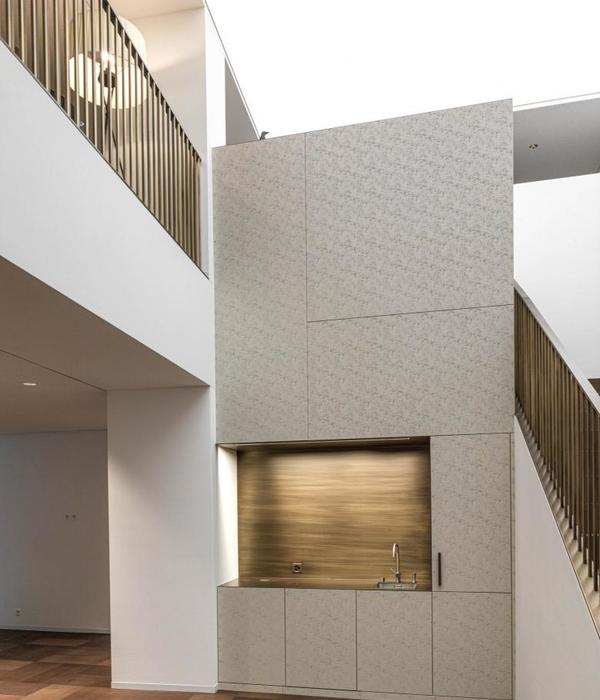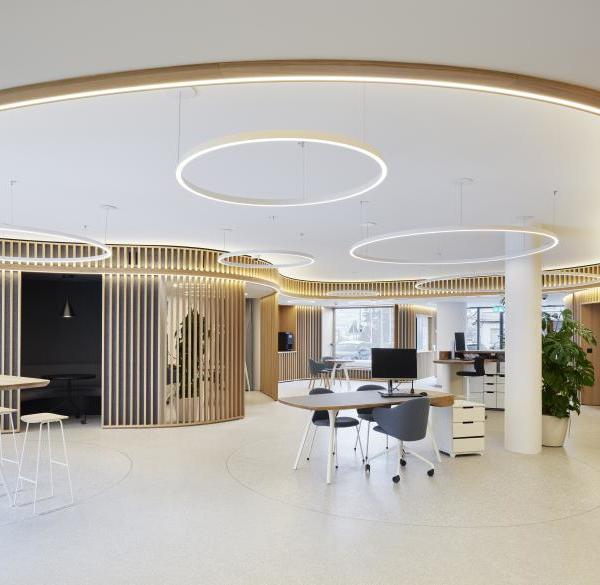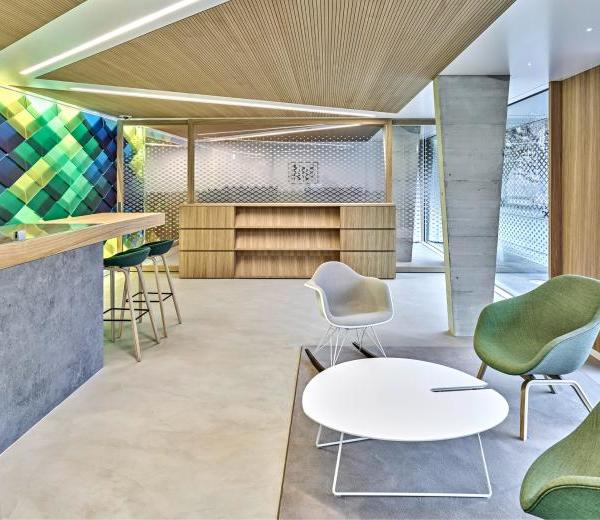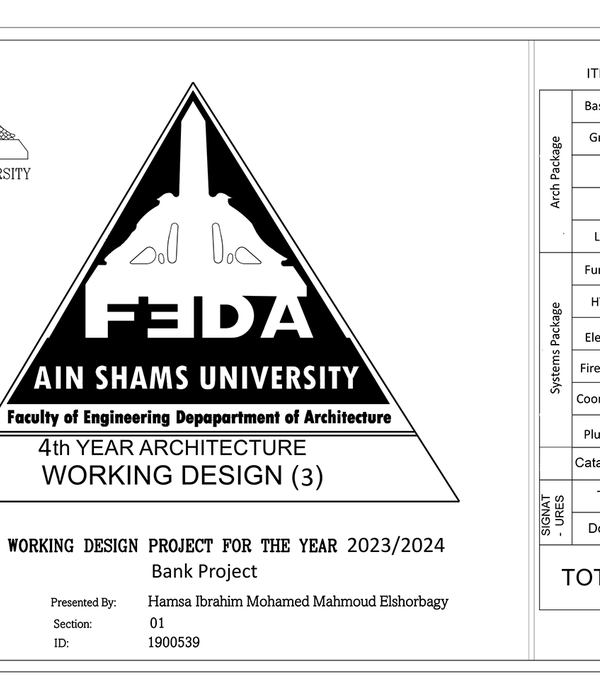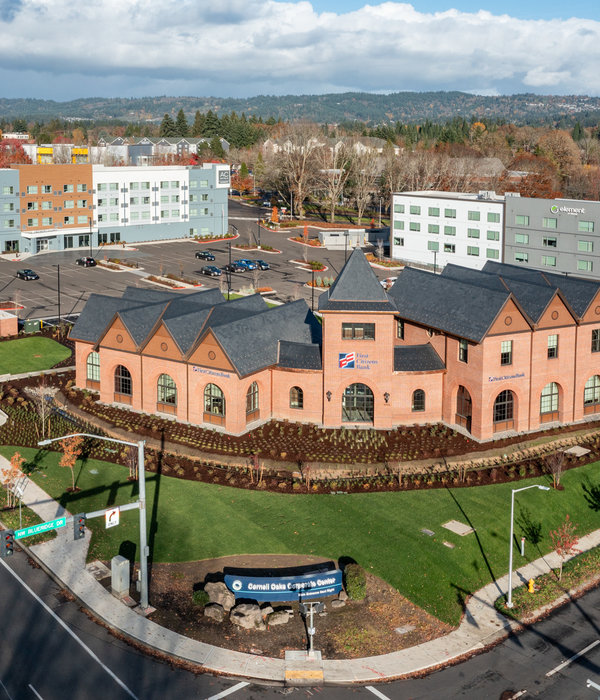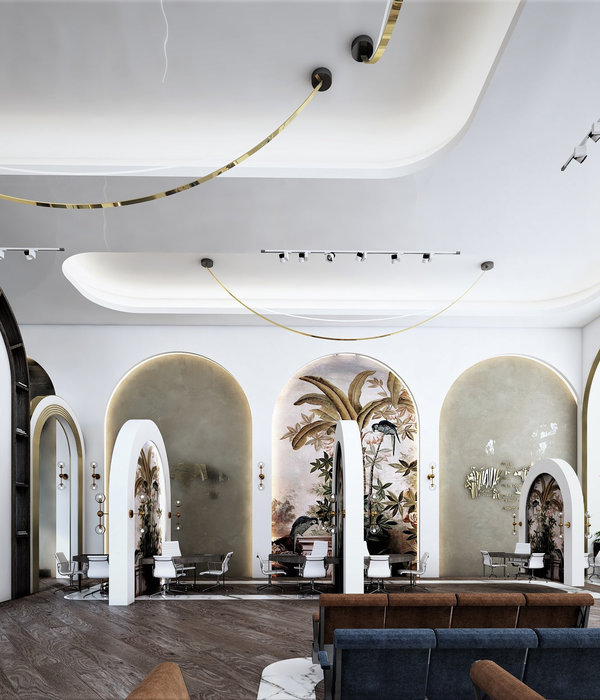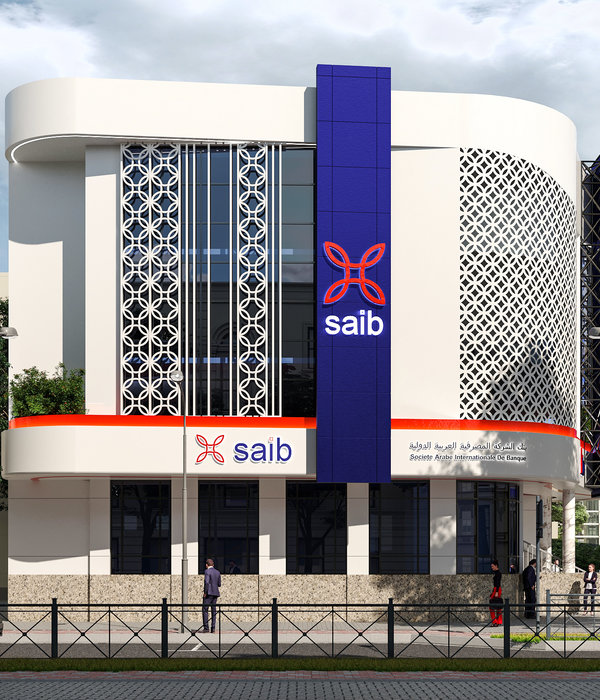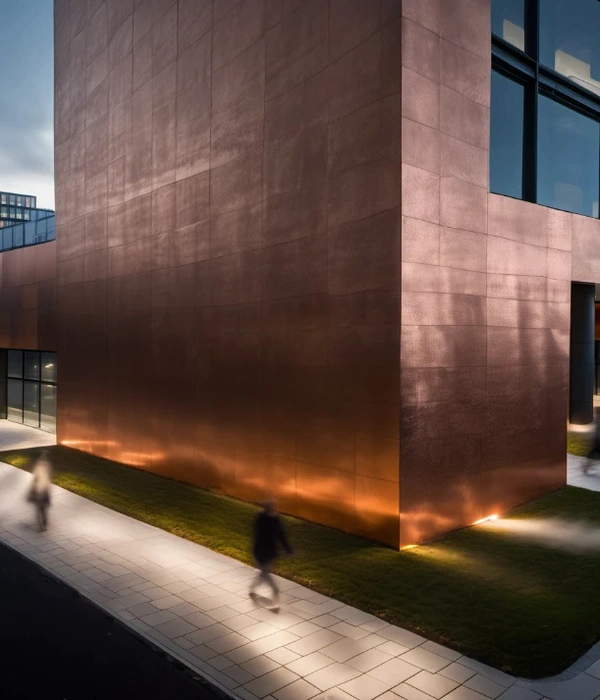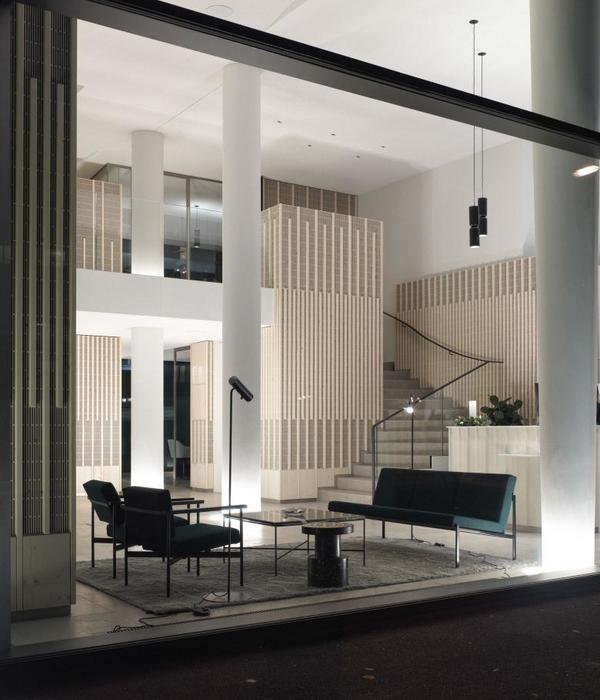该项目是山中湖村集工业-行政-学术于一体的区域重建计划的试点项目。三角形的木制网格系统将该区域丰富的景观元素融合在一起,为当地的人流、旅游业和社区网络提供了一个关键性的枢纽。
▼建筑外观,exterior view
This is a pilot project for an industry-government-academia regional redevelopment of Yamanakako Village. The regional hub regenerates a flow of people, tourism industry and local community network with a triangle wooden grid system formed by the new narrative landscape. Triangle wooden grid system integrates different elements in the local landscape.
▼平面图,plan
三角形的第一条轴线提供了南北向的人行流线。第二条轴线连接了富士山的景观和当地标志性的树林景观。第三条轴线则贯穿了周围建筑的屋脊轮廓。这一网格系统可以根据社会的变化由居民进行调整和改变,并将不同距离和时间中的景观整合起来。同时,室外长椅、木质平台、顶篷、玻璃房和一些私密的室内空间共同为建筑创造了变化的热条件,并可根据季节的变化为巴士乘客和游客提供可扩展的活动区域。
▼场地分析示意,site analysis
The 1st axis of triangle is pedestrian circulation between north-south area. The 2nd axis links views between Mt. Fuji and the local symbol tree in North KOMINKA area. The final one is an axis comes from surrounding roof ridges direction. This grid can be a platform for micro renovation by local residents according to dramatic social change. This grid sews long-middle-short distance landscapes and different time. In addition, the gradational thermal condition is created with different opening conditions as outside bench, deck, canopy, glass box and intimate inside rooms. This designs an extendable activity area according to different number of bus passenger and tourist between winter and other seasons.
▼三角形的木制网格系统成为当地人流、旅游业和社区网络的关键枢纽,the regional hub regenerates a flow of people, tourism industry and local community network with a triangle wooden grid system
▼室外长椅、木质平台和顶篷,outside bench, deck and canopy
日本是一个人口负增长、同时面临着老龄化社会和新政府系统带来的各种变化的国家。设计团队在此基础上对“恒定的系统网格”进行了探索,旨在了解当地状况并支持未来的生活方式。该方案中的“恒定三角木制网格”便致力于以当地的历史和景观为依据来创造全新的本地活动。
Japan is the leading country happening the social changes of depopulation, aged society and new local government system. Therefore, our team is interested in discovering “Identical grid system” reading local context and supporting future lifestyle. The system of“Identical triangle wooden grid”reading local history and landscape generates new local activity.
▼游客中心室内空间,Tourist Center interior view
▼多功能活动室,multi-purpose room
▼服务空间,service room
这种“微型公共网络”有助于当地社区和经济的重建。它是一种以小型村镇为基础的重建模式,能够将整个地区的微型建筑联结起来。该网络依附于各种创新性的技术,包括信息技术、自动驾驶、无人机和新经济等。这种方法能够作为一种未来生活方式的平台,对当地的景观和历史进行平和的、渐进式的更新。
“micro public network” can reconstruct local community and economy.The “micro public network” is a method of reconstruction for small village. That is networking with micro scale buildings in a whole area. The network is created by innovative technology, like IT, Automatic drive, Drone and New economy. This method can update local landscape and history as a future lifestyle platform with sequence of gradual and small developments.
▼夜间外观,exterior view by night
▼从户外望向室内,view to the interior
▼剖面示意图,section-diagram
Architect: SUGAWARADAISUKE Architects Inc. (Daisuke Sugawara, Noriyuki Ueakasaka, Hiroyuki Nakazawa)
Structural design: TECTONICA INC. (Yoshinori Suzuki、Hinako Igarashi)
Facility Design: ZO CONSULTING ENGINEERS(Seizo Kakinuma)
Lighting design:Toh design(Aki Hayakawa)
Landscape design/Schematic Design: SUGAWARADAISUKE Architects Inc.
Development Design: Baba Sekkei Inc.
Whole Area: Supervisor; Yamanakako village design strategy assembly
Schematic design and design management: EAU Inc./Japan cultural heritage consultancy/ALMEC
Corporation Constructor: Fujikyu Kensetsu Inc.
Site area:1090.15㎡
Building area:126.27㎡
Floor area:105.83㎡
Photo: Kazumi Ebihara/GlassEye Inc.
Location: Yamanashi, Japan
Design period: Mar. 2015 – Feb. 2017
Construction period: Sep. 2017 – Mar. 2018
{{item.text_origin}}

